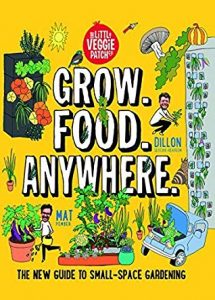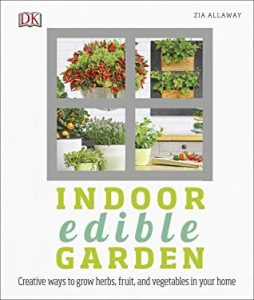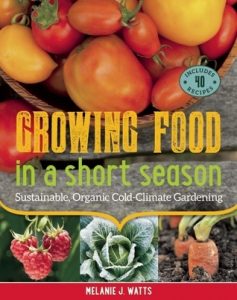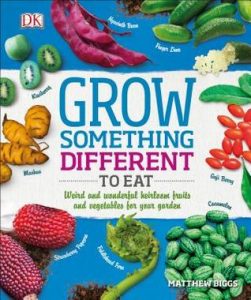 I started gardening this year for the first time in my twenty odd years of existence upon this earth, save for the time I planted tulips as a wee child of 7 or so years, or the time I scattered some carrot seeds out in the yard and thought that maybe they’d grow without any help from me.* (Spoiler alert: I’m still waiting.) But this year, I was bit by the gardening bug early May (literally and figuratively at this point, considering how much of a mosquito trap I am), and so towards the beginning of June, armed with a bag of potting soil and an egg carton in hand, I planted some tomato seeds and watered them diligently. Anyone who has ever planted tomatoes ever now knows how this is going to end: it’s August, and my tomato seedlings are nice and strong (and absolutely adorable), but it’s probably going to be too little too late for them to fruit fruitfully this year. They’ll probably grow just enough to give me hope before dying back down due to frost or lack of sunlight without ever having given fruit, even if I bring them indoors or otherwise attempt to lengthen the growing season. With this heavy knowledge in mind (the heaviness in my heart contrasted against the plant light from lack of fruit), I turned my efforts towards planning for next year, as clearly, my transgressions against Demeter this season were too great; I must revise my strategy and offer up new libations to the goddess of fertility.
I started gardening this year for the first time in my twenty odd years of existence upon this earth, save for the time I planted tulips as a wee child of 7 or so years, or the time I scattered some carrot seeds out in the yard and thought that maybe they’d grow without any help from me.* (Spoiler alert: I’m still waiting.) But this year, I was bit by the gardening bug early May (literally and figuratively at this point, considering how much of a mosquito trap I am), and so towards the beginning of June, armed with a bag of potting soil and an egg carton in hand, I planted some tomato seeds and watered them diligently. Anyone who has ever planted tomatoes ever now knows how this is going to end: it’s August, and my tomato seedlings are nice and strong (and absolutely adorable), but it’s probably going to be too little too late for them to fruit fruitfully this year. They’ll probably grow just enough to give me hope before dying back down due to frost or lack of sunlight without ever having given fruit, even if I bring them indoors or otherwise attempt to lengthen the growing season. With this heavy knowledge in mind (the heaviness in my heart contrasted against the plant light from lack of fruit), I turned my efforts towards planning for next year, as clearly, my transgressions against Demeter this season were too great; I must revise my strategy and offer up new libations to the goddess of fertility.
Which is where Grow. Food. Anywhere. by Mat Pember and Dillon Seitchik-Reardon comes in! We’re just going to overlook the endpapers a little bit on this one, because they basically reduce all of Canada into one growing condition apart from some tiny slivers that are Toronto and surrounding Southern areas, as well as both the east and west coasts. It also neglects to note the tree line, which might be of some importance if you’re trying to grow food. BUT! The rest of this book is still incredibly useful as an introductory primer to gardening for beginners like me, covering a nice variety of different ways to garden, from growing veggies in your yard to a raised bed to pots and other containers to indoors. They also cover a range of different potential pests to your garden and what to do about them, ranging from insect to mammals (such as children)! While I’m holding out some hope for this round of vegetables in my garden, I feel much better equipped for the next round armed with this colourful volume.
For more resources on gardening in tight spaces and/or a sorely mistimed start to the growing season (and how to extend the season), take a look below the cut!
*No carrots have grown out of that one attempt, sadly, and squirrels squirreled away all of the tulip bulbs over the years, leaving nothing but a weedy overgrown gardening area.
 If you don’t have a lot of space to plant your fruits and veggies in the soil, you’ll be able to find some solutions and workarounds in this small but mighty volume: Indoor Edible Garden by Zia Allaway. From what container to use for your indoor gardening and what plants are suitable for growing in small spaces or with less sunlight, to where to put which plants (close to the window? in the shade?), Allaway gets you started plotting out how your space is going to be of most benefit to – as well as benefit most from – growing the plants you want to complement your culinary pursuits! I love the illustrations and layout, the portioning off of the home into different zones that are easy to refer to when you look at specific plants and where to place them for their best health, and the overall optimistic outlook that you can grow a heck of a lot of different things in containers inside the comfort of your home. I’m especially excited about the peppers and the fact that you can grow a citrus tree indoors, but there’s also tons of less exciting (but probably more practical – depending on your regular cooking fare – ) suggestions that will take your meals to the next level.
If you don’t have a lot of space to plant your fruits and veggies in the soil, you’ll be able to find some solutions and workarounds in this small but mighty volume: Indoor Edible Garden by Zia Allaway. From what container to use for your indoor gardening and what plants are suitable for growing in small spaces or with less sunlight, to where to put which plants (close to the window? in the shade?), Allaway gets you started plotting out how your space is going to be of most benefit to – as well as benefit most from – growing the plants you want to complement your culinary pursuits! I love the illustrations and layout, the portioning off of the home into different zones that are easy to refer to when you look at specific plants and where to place them for their best health, and the overall optimistic outlook that you can grow a heck of a lot of different things in containers inside the comfort of your home. I’m especially excited about the peppers and the fact that you can grow a citrus tree indoors, but there’s also tons of less exciting (but probably more practical – depending on your regular cooking fare – ) suggestions that will take your meals to the next level.
For container gardening, I also found The Vegetable Gardener’s Container Bible by Edward C. Smith to be very helpful, providing instructions for building a variety of your own self-watering container pots. There are also lots of photos demonstrating steps for the instructional parts, such as for tucking in transplants to make sure they’re moved safely and soundly, as well as for making all of the self-watering containers. For each of the highlighted plants, Smith includes information about what kind of pot to use, how to take care of the plant (including information about bugs), and how to enjoy the harvest, along with extras such as what variety of that plant to choose depending on what you want from the plant. All in all a very informative book that’s filled with easy to follow instructions.
 Alternatively, if you’re like me and accidentally shortened your growing season – because I’m pretty sure the growing season in Vaughan isn’t actually considered short, hovering around 150 days on average – picking up Growing Food in a Short Season by Melanie J. Watts is like (re)discovering your hope in humanity. To know that there are tips and tricks to extending the growing season (e.g. cloches, cold frames, starting seeds indoors) just about puts light back into my life! Even better, this was written for a Canadian audience, though not southern Ontario, the author herself residing in British Columbia. There is also information on how to preserve your harvest for the winter months, in case you are in need of inspiration.
Alternatively, if you’re like me and accidentally shortened your growing season – because I’m pretty sure the growing season in Vaughan isn’t actually considered short, hovering around 150 days on average – picking up Growing Food in a Short Season by Melanie J. Watts is like (re)discovering your hope in humanity. To know that there are tips and tricks to extending the growing season (e.g. cloches, cold frames, starting seeds indoors) just about puts light back into my life! Even better, this was written for a Canadian audience, though not southern Ontario, the author herself residing in British Columbia. There is also information on how to preserve your harvest for the winter months, in case you are in need of inspiration.
Then there’s also The Year-round Vegetable Gardener by Niki Jabbour, which allows you to keep gardening all year round, if you’re loathe to give up your gardening tools for the winter season.
 Lastly, there’s this little gem packed full of information about different types of heirloom fruits and veggies that you can grow in your garden, that might be a bit off the beaten path. Some of these plants I had never before seen in my life nor even known that they existed! Grow Something Different to Eat by Matthew Biggs is filled to the brim with foods like finger lime (they’re filled with little pearls of their fruit and apparently taste like a cross between grapefruit and lime), taro, and tea (yes, for those true tea enthusiasts among us who would jump to grow and prepare their own tea leaves, you too can learn how to fulfill all your dreams with this book here!). As someone who has already ordered strawberry popcorn seeds for next year’s gardening (the strawberry popcorn is pictured on the front cover), I do quite appreciate this list of foods that I hadn’t even known about that are possible to grow in the comfort of my home or garden.
Lastly, there’s this little gem packed full of information about different types of heirloom fruits and veggies that you can grow in your garden, that might be a bit off the beaten path. Some of these plants I had never before seen in my life nor even known that they existed! Grow Something Different to Eat by Matthew Biggs is filled to the brim with foods like finger lime (they’re filled with little pearls of their fruit and apparently taste like a cross between grapefruit and lime), taro, and tea (yes, for those true tea enthusiasts among us who would jump to grow and prepare their own tea leaves, you too can learn how to fulfill all your dreams with this book here!). As someone who has already ordered strawberry popcorn seeds for next year’s gardening (the strawberry popcorn is pictured on the front cover), I do quite appreciate this list of foods that I hadn’t even known about that are possible to grow in the comfort of my home or garden.
Each plant listed in this book comes with an information page followed by a detailed step-by-step how to grow guide so that your garden will be bursting with finger lime, strawberry popcorn, and wasabi throughout the season!
I’m going to end off with a collection of interesting tidbits I found out about during the writing of this post:
- York Region has a number of community gardens (as does Toronto – they actually have way more than we do, including some maps of backyard sharing programs and the like: YardshareTO, The Stop, and Green Access Program). In fact, there is a community garden located directly behind the fire department along Clark Ave., very close to the Bathurst Clark Resource Library: the Growing to Give community garden. I found it a bit difficult to locate one page where I could find all the information about this community garden and how it works – it turns out everyone contributes to the garden, instead of getting their own plot – but if you send an email to the address listed on this page about community gardens, I’ve had a good experience with hearing back.
- I started reading The Fruitful City by Helena Moncrieff (also available on hoopla digital) and learned that Not Far From the Tree, a Toronto organization, connects people with fruit-bearing trees with people who are interested in picking fruits from those trees! According to the “About Us” page of NFFTT, “The bounty from each fruit pick is split 3 ways: ⅓ is provided to the tree registrant, ⅓ is split amongst the picking volunteers, and ⅓ is delivered via cargo bike to one of our 35 social service agency partners, including food banks, community kitchens, supportive housing programs, and community health centres.” There’s no affiliation here with NFFTT at all, but I think it’s such a cool idea! Becoming a fruit picker or a registered tree owner does require a membership fee, but honestly it’s kind of a pittance for the fruit you get to pick throughout the season (compared with how much one might spend on fruits throughout the summer anyway) and all the community-building you get to do.
I LOVE the NFFTT idea—I think it’s likely a real happiness booster (as well as a vitamin booster) for all those involved. In his book The Little Book of Lykke, Meik Wiking recommended assigning an apple tree to even school-aged child for them to harvest and care for as a way to boost well-being among citizenry. I love the idea that the fruit goes to a thoughtful selection of hands and does a lot of good that way. Beautiful.
*every school aged child
Me too! I’m definitely going to be revisiting NFFTT next spring/summer so that I can give it a try. Moncrieff also participates in the fruit-picking of NFFTT and talks about how her experience was not as ideal as she was expecting, because of course the fruits you’re picking aren’t always in perfect shape like when you go apple picking (which also affects what it can be used for by community organizations that the fruit is subsequently donated to), but I feel like the community-building aspect of it outweighs the potential disappointment as far as bounty goes. I know NFFTT has the figures laid out on its website, but that’s based on weight rather than how much of it actually gets used, so it’d be interesting to see what the actual effects are. The Fruitful City was quite an interesting read – I’d definitely recommend it! Either way, I think it’s a great idea, if even just to get in contact with other like-minded people and make new friends over fruit-picking.
Ooh! That’s such a nice idea too, assigning an apple tree to every child – and I’m assuming this would all be in a public orchard? (Although where would we house all those apple trees? I guess at some point they’d get passed down from generation to generation, like an heirloom?)
Finding land would certainly be an interesting puzzle to solve in many places! That’s the idea—to pass them on! In The Little Book of Lykke, Wiking describes that as new children enter the school (and I imagine, as older children graduate), the trees would be passed on so that every child gets the joy of apple picking built into their childhood. 😀 The plan had yet to be taken up by anybody as of the book’s writing, however. Maybe someday!